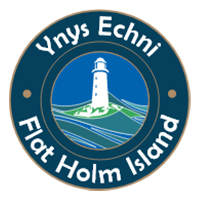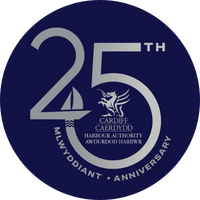Contact
Flat Holm Booking Office,
Cardiff Harbour Authority,
Queen Alexandra House,
Cargo Road,
Cardiff Bay
CF10 4LY
Tel: 029 2087 7900
About us
Flat Holm Island is managed by The Flat Holm Project which includes a full-time warden and a team of volunteers. The warden lives permanently on the island with about two to three volunteers at any one time. The team works on maintaining, studying and preserving the island, its buildings and its wildlife.
Flat Holm is designated a Site of Special Scientific Interest and Local Nature Reserve. The warden and volunteers conserve the Island’s natural and cultural features, from maritime grassland and Victorian barracks, to seabird colonies and wartime bunkers.
Alongside the Flat Holm Project team is The Flat Holm Society. The society supports the work of the project team by raising funds and providing volunteers. They are a charity that helps protect the wildlife, and historic environment, of Flat Holm.
For further information about the society, please visit: www.flatholmsociety.org.uk

